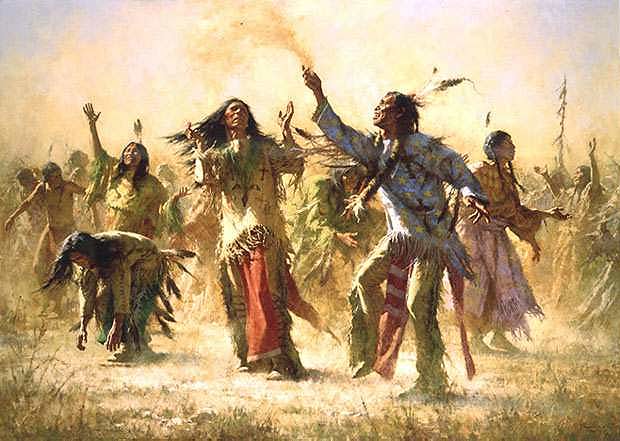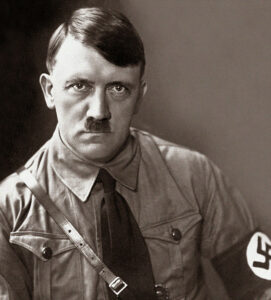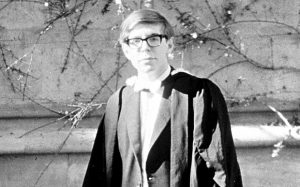The Ghost Dance, introduced by the Northern Paiute tribe, was a ceremony that acted as a hope to bring back prosperity and liveliness to all of the natives who had fallen under attacks and displacements from their homelands by white American settlers. These Ghost Dances sought to unify the tribe and bring their people together in the hope of returning to their previous ways of living; it was through this Ghost Dance that a strong connection to the spirit world was maintained. Dating back to its beginning in Nevada in 1869, the Ghost Dance was introduced by the visions of the prophet Tävibo, a Northern Paiute. He spoke of a time when Indians would once again be prosperous and no longer be under the control of white people, claiming that white people would disappear altogether. This would allow native Americans to return to the life they once had before the Europeans came, and their buffalo would once again be plentiful. This was the wish many Indians held, to return and resume to act in their cultural ways with no interruption. Tävibo also claimed that in introducing the Ghost Dance, he had spoken to their deceased ancestors. He claimed that it was these dead family members who contrived and shaped the dance into a circular performance dance ceremony. This supposed interaction with the dead and their overall influence on the living is how the name of the practice came to be called the Ghost Dance. The dance grew in popularity as it spread throughout the land, over the great plains to Nevada and California, and even to Oregon.1

During the following years, other prophets emerged, but the Ghost Dance did not continue to see widespread appeal until the appearance of another prophet, said to be Tävibo’s son. His name was Wovoka, but he was also known as Jack Wilson. Wovoka was born into the Northern Paiute tribe, but at age fourteen his father died. This left Wovoka to be raised by a white family, on the nearby ranch. By joining David Wilson’s family, Wovoka worked on the ranch and was given the name of Jack Wilson. He become accustomed to many new ways, such as the English language and the Christian religion. While he lived under this new household for years, as he became an adult he rejoined the Paiute tribe. In time, he too was said to experience visions from a higher power, or supreme being, and he spread his teachings among the tribe. Wovoka preached that his people should learn to live peacefully, for the time being, with the newcomers. Just as Tävibo had done, Wovoka also introduced dances and songs thought to have been passed on from their Indian ancestors. Wovoka expressed that if these ceremonies were performed, and if they exhibited their practices of peace, then their land too would become free of white people. Not only would a banishment of the white Americans come, but Wovoka also claimed there would be a resurrection of the deceased, and that all would be reunited with those who had passed.2
The dance would last for four days; it was a round dance that united the entire tribe. During the dance some would take fans that were woven from the wings of eagles and fan those partaking in the round dance. This act was said to put the dancers into a trance, and while submerged, those in the trance would see their relatives who had passed on to the afterworld. The dancers would see them in a place of complete serenity. The lives they were living were the ones of the past where all were happy and under no oppression, with the supply of buffalo easily at hand.3
Those who followed the teachings of Tävibo were not necessarily followers of Wovoka. But in contrast to that, the Ghost Dance was welcomed among the Plain tribes across many states, including Kansas, Oklahoma, Nebraska, Texas, and the Dakotas. The words and practices of Wovoka reached as far as the Cheyenne, Arapaho, Kiowa, Wichita, Caddo, and Apache tribes. The numbers of those participating in a single ceremony often exceeded three thousand, as groups gathered to dance every night for two weeks during a single Ghost Dance. The greatest influence reached the Lakota Sioux, who brought the dance into practice. Wovoka was consulted and listened to by the Sioux, and they took his message to heart. By 1890, Wovoka was speaking of the Ghost Dance bringing about the resurrection of their deceased ancestors. He also claimed that herds of buffalo would return in abundance, and that whites would not only leave, but would be annihilated by natural disasters, leaving Indians to their peaceful solitude once again. All wished to return to the life before any contact with the Europeans had occurred. The message that the Ghost Dance was trying to fulfill was not of hatred or rebellion, but one of returning their people to the culture and life they had enjoyed before the coming of white settlers. The Ghost Dance gave them hope that such times were yet to come. These tribes were suffering dreadful conditions, which had been forced on them, forcing them to reside in ever narrowing reservations. The Lakota people were the ones who went beyond the dance and even introduced adding special garments to the Ghost Dance ceremony. They began wearing ghost shirts that were adorned with symbols. But these shirts were not only considered a matter of simple decor, but were thought of as pieces of protection. It was a belief of the Lakotas that these shirts would resist harm from coming to them, and that even bullets would not penetrate these shirts.4

As more white citizens became aware of the Ghost Dance ceremonies being practiced by tribes around them, they sensed a threat by them and became alarmed. The U.S. Indian Policy, more specifically The Dawes Act, was believed to have been under attack by these dances and it created a fear among the white people of an uprising from the Indians. It is even said that officials, especially those who ran the reservations, saw that a war was being ignited by the Lakotas. Even the act of wearing the decorated shirts in practice of the dance fomented the idea that the Lakotas were forming and instigating the makings of a battle. In fear, the officials of the reservations called on the United States government. The president at the time, Benjamin Harrison, responded by sending the U.S. Army down to these reservations to stop the threat, hoping to end the potential conflict that was believed to be rising between the Indians and whites. This resulted in Indian leaders, such as Sitting Bull, being arrested and, unfortunately in this act, killed.5
On December 23, 1890, the Miniconjous Lakotas fled and escaped their reservation village after being struck with fear. From the words of John Dunn, a local squatter, the military had planned to take the Lakota men and deport them to an island in the Atlantic Ocean. With this news, the Miniconjous Lakotas ran, but after five days, the tribe was found by the Seventh Cavalry, who were sent to intervene. The Lakotas were sent to reside in confinement on Wounded Knee Creek. By the next morning, December 29, Colonel James W. Forsyth ordered that the tribe surrender all firearms. In back and forth arguments, some Lakotas engaged in the songs of the Ghost Dance. Once again, the Ghost Dance was interpreted as a threat. Some Indians began throwing handfuls of dirt in the air, and this was seen as a signal of attack. This ignited the soldiers who were supervising the reservations. In a quarrel over a rifle, Black Coyote refused to surrender his gun to a soldier who had demanded it. During the tug of war and struggle to get the gun, it accidentally fired. Because of this sudden shot, troops opened fire because they were under the assumption that they were indeed under attack and needed to regain order. The Lakotas, who had no weapons, did all they could do to flee the situation. The military fired their weapons and chased down all that attempted to escape, killing along the way. The gunfire continued for hours as the military pursued the Lakotas. This occurrence became known as the Wounded Knee Massacre. Between 145 to 300 Indian followers died, many of these victims being women and children. In the attempt to gather all bodies, some were found even three miles away from the reservation. One-hundred-forty-six Lakotas were buried in a mass grave, while the others were gathered and accounted for later.6

While the military lost only twenty-five men, it was celebrated among the white people as a success. People believed that the “savage ways” of the Indians may finally be over. The Medal of Honor was presented to twenty individuals for their acts during the massacre at Wounded Knee, as their actions was seen as being extremely heroic. The Wounded Knee Massacre was the final blow to the Indians as this ended the four hundred year conflict between the whites and the natives. In only ten years, the Indian population reached a low of 250,000 people. This massacre resulted in the Ghost Dance ceremonies dying out among the Lakotas, but elsewhere in the plain, the acts continued. In some areas as far away as Canada, the Ghost Dance was practiced well into the 1960’s. The ceremonial Ghost Dance holds a rich cultural importance to all of those who were a part of it. It was an expression of native tribes longing for the return of their happy, prosperous, and unbothered lives before the introduce of white settlers. It shows the practice as being completely connected with ones spirituality, in that it reunites members to those who have passed. It highlights how important culture is to native Indians by the acts of dancing, singing songs, and the clothing they put on their bodies. The true purpose of these Ghost Dances was to inspire hope, and it continues to do so in that it shows that even today this Indian culture should not die out as time progresses.
- Encyclopedia of The Great Plains, 2011, s.v. “Ghost Dance,” by Todd M. Kerstetter. ↵
- Encyclopedia of The Great Plains, 2011, s.v. “Ghost Dance,” by Todd M. Kerstetter. ↵
- Salem Press Biographical Encyclopedia, 1995, s.v. “Wovoka,” by Ronald W. Long. ↵
- The Encyclopedia of Oklahoma History and Culture, 2009, s.v. “Ghost Dance,” by Gloria A. Young. ↵
- The Encyclopedia of Oklahoma History and Culture, 2009, s.v. “Ghost Dance,” by Gloria A. Young. ↵
- Encyclopedia of The Great Plains, 2011, s.v. “Wounded Knee Massacre,” by John E. Carter. ↵



97 comments
Alyssa Vela
This was a good article! You did very well presentation wise, it seemed like you really knew what you were talking about! Most of all I enjoyed how you made it a point to include the point of view of the Indians. The way this culture had it’s downfall was tragic, but I thank you for the enlightenment on the subject. I look forward to reading more of your work in the near future!
Lianna Ybarra
Your articles are probably the best ones I have read! They are so descriptive and tell a story that is intriguing each time. I had heard of the Wounded Knee Massacre plenty of times before but never knew how it came to be. It really disheartens me to read these articles about how the American people did these things to innocent people who didn’t do anything. It was all because of misinterpretation of the US soldiers who thought the Indians were a threat when really it was the opposite.
Tyler Sleeter
Great article with lots of information. It was surprising to learn that the Ghost dance would last up to four days straight, and that it intimated the white people. It never ceases to amaze me that our government is so good at condemning what it does not understand (or chooses not to understand). Instead of offering a fair deal to the Native American tribes, the government panicked and opted to herd them up like animals and them killed them. It was truly a sad chapter in American history that we need to remember and learn from so we do not repeat it with any other groups.
Anayeli Prieto
This is such a great article and it’s really cool to know that the Sundance gave them hope for a better tomorrow . From all the history that I’ve learned in the past it’s very difficult to see them go through all of these things without a sense of hope and the fact that in this article as you describe they do have that hope it’s good that they continue to try am and I give up. I would really like to learn more about this topic it’s really interesting to see that the believes they have during war and other situations.
Aimee Trevino
Interesting article! I really liked how you had so much information, and it seemed you knew what you were talking about. I also enjoyed how you brought these topics together as one. I think it is really sad that repeatedly the Natives are killed and have their land and culture taken from them, just as the Northern Paiute tribe. Overall, written very well.
Sam Vandenbrink
Excellent article! The Ghost dance is very intestine and has allot more symbolism then people take into consideration. Its hard to believe that the dance would last for four days! Reading about what we did to the Indians in there own home is sad. The massacre at Wounded knee is horrifying and its hard to think of our government doing something so horrific to a group of individuals. The article pointed bad places in history for all of us, although articles like this one arnt always a “happy” read its still an excellent article!
Faisal Alqarni
Hi Gabriel once again I really like how your words flow together in your writing and this piece l just like in the one on The Lynching Era: the ghost dance I feel addresses a time of despair and it is a sign filled with hope for a better tomorrow by those who are going through a difficult period in time. The spread of the ghost dance to me in all the various states it shows the power of giving hope to people in a time when it is so easy to be discouraged. I feel that even with the wounded knee massacre it is rituals like this that have kept the identity of the Native American people solid and defiant in the presence of so much difficulty.
Mariana Govea
Very good descriptive article!! What an awesome topic to talk about!! I really did not know much about the customs of Native Americans, but this one is awesome! I always knew that they used these dances to communicate with their past ancestors but you did a good job on explaining the multiple uses of this dance, which I found pretty interesting that they used tot his dance to help them defend themselves and gain strength to those native Americans who were hurt by the white settlers!However reading about the story of the battle wounded knee is very sad and unfortunate but its good to have written about it to help us remember about these times in history that have made a huge impact on where we live today!
Luke Trevino
This is truly another dark time in American history! Hundreds of Indians were killed because they were different. American really had no reason on why to kill the Indians but they saw it justified. It’s insane how easy it was for the white man to get away with committing crimes and not being punished for it. I believe the dance should of been communicated better rather then the whites assuming it was an act of war!
Briana Bustamante
Loved reading this article. I felt that you hit on some great points. For example, the lack of communication. I felt that it was very sad that because of the lack of communication the white people believed that the ghost dance was a demonic dance. I loved the photos that you used, they related nicely to your work. Great Job!